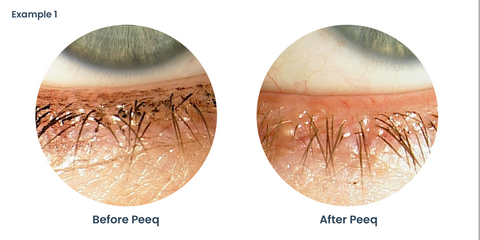Imagine a microscopic layer of bacteria clinging to your eyelids. That's essentially what a biofilm is. These communities of bacteria create a protective shield, making them difficult for your body's defenses to eliminate. Even antibiotics can struggle!

These persistent biofilms wreak havoc on your eyes in several ways:
- Oil Gland Blockage: Your eyelids have tiny glands that produce oil, a crucial part of your tear film. This oil helps prevent tears from evaporating too quickly. Biofilms can clog these glands, leading to dry eyes.
- Eyelid Inflammation: The bacteria in biofilms release toxins that irritate your eyelids and the surface of your eye, causing redness, inflammation, and discomfort.
- Spreading the Problem: Biofilms aren't stationary. They can spread to your tear glands, further disrupting tear production and worsening dry eye symptoms.

While factors like reduced blinking and medications can aggravate dry eye, biofilms seem to be the underlying trigger in many cases. This explains why different types of dry eye often occur together.

Researchers have proposed stages of how biofilms contribute to dry eye:
- Stage 1: Folliculitis: This is the initial inflammation of the lash follicles, allowing biofilms to easily spread. You might notice small bumps or redness around your lashes.
- Stage 2: Meibomian Gland Dysfunction (MGD): Biofilms can clog the glands that produce the oil layer of your tear film. This can lead to a decrease in the quality and quantity of oil, worsening dry eye symptoms.
- Stage 3: Lacrimilitis: In advanced cases, biofilms can even reach and impact the glands responsible for tear production, further drying out your eyes.

Traditional methods for addressing biofilms can be expensive and require a doctor's visit. Peeq offers a new approach. It's a safe and easy-to-use at-home tool designed to help reduce biofilms and prevent dry eye symptoms.
Take Control of Your Dry Eye with Peeq
By addressing biofilms at the source, Peeq can help you manage your dry eye and experience lasting relief. Talk to your doctor about whether Peeq is right for you, and visit our website to learn more about how Peeq can help you see a brighter future, free from dry eye discomfort.




Read the full report on Biofilms, Dry Eye and Peeq by Christopher Wolf, OD, FAAO, Dip. ABO.
Sources: National Library of Medicine

